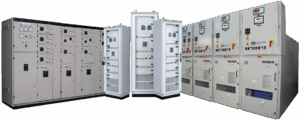Hearing aids are essential devices for individuals experiencing hearing loss, allowing them to engage in everyday conversations and activities. Over time, however, hearing aids accumulate earwax, dust, and moisture that can clog the microphones and receivers. Regularly cleaning these components can help maintain sound quality and prolong the life of the device. This article provides a detailed guide on how to clean the microphones and receivers of Private Hearing Aids safely and effectively.
Why Cleaning Your Hearing Aid’s Microphone and Receiver is Important
The microphones and receivers are the most crucial parts of a hearing aid, as they capture sound and transmit it to your ears. When dirt, earwax, or moisture builds up on these parts, it can significantly impair sound quality. Reduced sound clarity, intermittent noise, or complete blockage can occur if these components aren’t cleaned regularly.
Proper cleaning not only ensures consistent sound quality but also minimizes the risk of frequent repairs or replacements. By establishing a regular cleaning routine, hearing aid users can maintain the longevity and performance of their devices, preventing malfunctions that may arise due to accumulated debris.
Essential Tools for Cleaning Hearing Aids
Before beginning the cleaning process, gather the right tools to prevent damage and ensure thorough cleaning. Most hearing aid providers include cleaning tools with new devices, but you can also purchase these tools separately if needed. Here are some recommended tools for cleaning the microphones and receivers of hearing aids:
- Soft-Bristle Brush: A soft-bristle brush is excellent for removing earwax, dust, and debris from the microphone and receiver ports. Avoid using any hard or metal brushes, as they may damage the delicate components.
- Cleaning Wipes: Specialized hearing aid wipes are alcohol-free and can be used to gently clean the exterior surfaces of the device. Avoid using any household cleaning products, as these may damage the materials.
- Vent Cleaner or Wax Pick: These tools help clean out the vents and small holes on the hearing aid, ensuring that no debris is blocking the sound path.
- Hearing Aid Dehumidifier: A hearing aid dehumidifier is an effective tool for removing any moisture that may have accumulated in the device, particularly useful in humid climates or for active users.
Step-by-Step Guide to Cleaning Hearing Aid Microphones and Receivers
- Turn Off and Prepare the Device
Before you start cleaning, turn off your hearing aids to prevent any accidental damage. For battery-powered devices, it’s best to remove the battery, while for rechargeable devices, ensure they’re turned off completely. - Brush Away Surface Dirt
Use the soft-bristle brush to remove dust, earwax, and dirt from the microphone and receiver areas. Brush gently to avoid damaging the delicate microphone ports. It’s recommended to hold the hearing aid facing downward so that any loosened debris falls away from the device rather than into it. - Clean the Microphone Ports
The microphone ports are small and sensitive, so it’s essential to handle them carefully. Use a vent cleaner or wax pick to clear out any debris from the microphone openings. Do not insert anything sharp or metallic, as this can damage the microphone and affect sound quality. - Wipe the Exterior with a Cleaning Wipe
After clearing the microphone and receiver, use a hearing aid cleaning wipe to clean the outer shell of the device. This will remove any remaining dirt or oils that may have accumulated from handling the hearing aid throughout the day. - Inspect and Clean the Receiver
The receiver (or speaker) is where sound is transmitted into the ear canal. Use a soft-bristle brush or vent cleaner to remove any wax buildup from the receiver area. If your hearing aid has a wax guard or filter, consider replacing it periodically to prevent blockages. - Use a Hearing Aid Dehumidifier
After cleaning, placing your hearing aids in a dehumidifier helps remove any moisture that may have collected during the day. Moisture can cause corrosion, leading to malfunctions. Dehumidifiers are especially beneficial for users in humid climates or those who wear hearing aids during exercise.
Professional Assistance for Hearing Aid Maintenance
While regular at-home cleaning is essential, professional maintenance can address more intricate issues or buildup that might not be accessible with standard cleaning tools. Professional cleaning by experts, like those at Almond Hearing, ensures that even hard-to-reach areas are free of debris and that all components are functioning optimally. Routine maintenance visits also allow professionals to inspect for any signs of wear and tear, extending the life of your hearing aids.
The Role of Private Hearing Tests in Maintaining Hearing Aid Quality
Regular private hearing tests play a vital role in ensuring your hearing aids are tuned to your specific hearing needs. Over time, hearing capabilities may change, and adjustments may be necessary to maintain the best possible sound quality. During a private hearing test, an audiologist can assess your current hearing levels and make any needed modifications to your hearing aids.
Additionally, Private Hearing Tests provide an opportunity for professional cleaning and maintenance. Audiologists can detect if your devices need deeper cleaning or repairs, preventing small issues from turning into major malfunctions. Almond Hearing offers private hearing tests and hearing aid maintenance, making them a reliable choice for keeping your devices in peak condition.
How Often Should You Clean Hearing Aids?
The frequency of cleaning depends on usage and lifestyle factors. Here are some general recommendations for maintaining your hearing aids:
- Daily: Perform a quick clean by brushing off any visible dirt and wiping the exterior. This can help reduce wax buildup and prevent dust from entering the microphone or receiver.
- Weekly: Conduct a more thorough cleaning by brushing the microphone and receiver, replacing wax guards if needed, and using a dehumidifier overnight.
- Monthly: Schedule a professional cleaning session every few months, especially if you use your hearing aids daily or in environments with a lot of dust, moisture, or noise. Almond Hearing provides professional cleaning services and can recommend the best maintenance routine based on your needs.
Troubleshooting Common Hearing Aid Issues
If you notice any decrease in sound quality, unusual sounds, or connectivity issues, these could be signs of dirt or debris affecting your hearing aid. Here are a few troubleshooting steps:
- Reduced Sound Quality: Clean the microphone and receiver ports, as clogged parts can impair sound transmission.
- Feedback or Whistling: Check if the hearing aid is positioned correctly in your ear and if there’s any wax blocking the receiver.
- Intermittent Sound: This can be due to a low battery or dirt obstructing the microphone or receiver. Try replacing the battery and cleaning the device.
- Connectivity Issues: For Bluetooth-enabled devices, restart your hearing aid and ensure it’s correctly paired with your phone or device.
If these issues persist, it’s best to consult a professional to diagnose any underlying problems.






